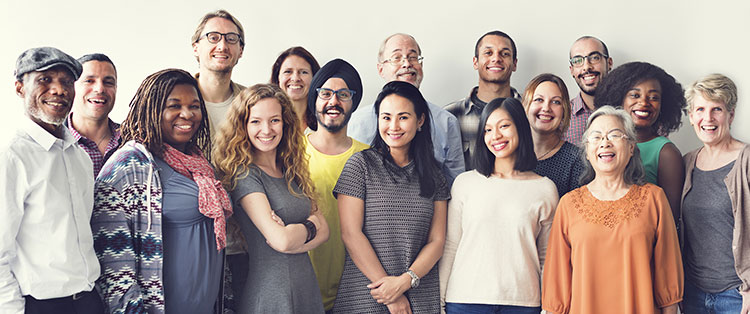Why diversity and inclusion fails
 By Tom Stroud on 19.02.2021
By Tom Stroud on 19.02.2021 In the HR industry, when it comes to the 'f' word, despite it being the very epitome of what makes us human, failure remains something many of us are uncomfortable admitting to. Regrettably, despite all the time, effort and budget that can go into creating a robust diversity & inclusion framework, it can very easily be thwarted and become ineffective.
But why do well-intentioned D&I programs flounder? What can be done to increase the effectiveness of a D&I strategy, and how can you overcome some of the issues that routinely arise?
Although D&I is currently considered by most large businesses to be an HR priority, it is rarely a business priority. Such new policies or initiatives are often reactive rather than proactive. A business responding reactively after a misdemeanour or blunder can easily be seen as more of a 'clean-up operation' than a genuine call for meaningful change.
So, if either your employees or customers view the response in this way, then it's framed negatively rather than positively, and this negative framing can cause resistance from those who may most need to take part in it.
Assuming a diversity and inclusion program began as an HR initiative and not a business priority, a typical issue that commonly arises is the misguided assumption that one size fits all. Along with this, many large companies looking to 'tick the D&I box' are also hoping to improve efficiency and cut costs, further hampering their eventual success. Prevailing methods that take a top-down approach starting with senior managers who are sent on enforced training and are then left feeling blamed or shamed.
D&I plans that start with finger-pointing and villainising certain groups usually fall at the first hurdle. Rather than looking to tick diversity boxes by scheduling seminars & group training methodically, perhaps consider mentorship initiatives or sponsorship programs that encourage employees to understand different points of view. This may also uncover specific areas that need improvement.
Resistance or 'diversity fatigue' is another element that can contribute towards a D&I breakdown. Although it may be an innovative new strategy for your business, cynicism towards it may occur for a host of reasons, including lack of belief that change can be made, resentment of enforced training, or the simple fact that certain groups or individuals feel either singled out or blamed.
Rather than dictating the training that staff must attend, consider tailoring it to the specific group you're focusing on and offering it as an option rather than compulsory. Recent research has revealed that when diversity training is mandatory, cynicism towards the subjects can increase, but for those who choose to attend training, less negative bias is shown afterwards.
Another prevalent and potentially more elusive issue is how your business handles unconscious bias. We know the human brain is hard-wired to the extent that some level of bias is unavoidable, but pretending there either isn't bias anymore or using it to excuse behaviour may be why so many training programs fail.
So, while it's relatively easy to train a workforce to respond correctly to questions about diversity, those people can very easily forget the correct answers too. Generally, even the most rigorous innate bias training tends to result in participants becoming aware that they have it but don't provide a solution on what they can do about it.
The final and perhaps most important reason that much well-intentioned D&I training goes awry is that most programs focus on differences rather than similarities. When we think about what makes us different, it develops a more profound sense of understanding and empathy, but it can equally create a "them and us" dynamic.
As humans, what helps us to foster deeper connections with others, is how like them we discover we are and what we have in common. If more diversity and inclusion programs looked to highlight similarities and sameness rather than differences, they would provide more opportunities for people to make deeper, more genuine connections with their colleagues in a meaningful way.
There are many ways a large organisation can ensure its diversity and inclusion programs are successful. Still, the first step is to monitor and evaluate what is & isn't working continually. Admitting failure doesn't have to be the nail in the coffin. It's one of the first steps towards meaningful change.



Have Your Say